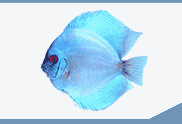

 |
||||||||||||
 |
||||||||||||
| Fishless Cycle | ||||||
| Chris Cow, ccow@dclchem.com | Ph.D. Organic Chemistry | |||||
Advantages of the fishless cycle: The advantages of this process over the traditional method of cycling a tank using a few small, hardy fish to get the bacterial colonies up and running all result from "front-end loading" the tank. The amount of ammonia added is far above that generated by a reasonable number of cycling fish, resulting in faster growth of the bacterial colonies, and larger colonies when you're finished. In practical terms, this means that your tank cycles faster (reports of anywhere from 10 days to 3 weeks, depending on the fish tank... compared to average of 4-6 weeks for traditionally cycled tanks), and that you can fully stock a tank when the cycle is complete. This latter point is of particular interest to keepers of african cichlids or other aggressive fish. If these fish are all added together as juveniles, they're much more tolerant of each other than if they're added in small groups after the first fish have established their territories. Of course, another big advantage is that no fish are subjected to high ammonia or nitrite concentrations, eliminating mortalities and ammonia/nitrite related illnesses which frequently occur in new tanks. Alternative Recipe: While the original recipe works quite well (4-5 drops NH3 / 10 gal / day until nitrite peaks, then reduce to 2-3 drops / 10 gal / day), it does NOT take into account varying concentrations of ammonia that are available. ACS grade ammonia, which I was using, is ~28% NH3, while most household cleaner grades vary from 4-10%, a fairly wide variation in concentration. Bottles that have been left open for long periods of time will be lower in concentration, as the NH3 gas escapes back into the atmosphere. With that in mind, I'd like to propose a different recipe, which was suggested by D_Man and others (thanks!): Add ammonia to the tank initially to obtain a reading on your ammonia kit of ~5 ppm. Record the amount of ammonia that this took, then add that amount daily until the nitrite spikes. Once the nitrite is visible, cut back the daily dose of ammonia to ½ the original volume. One advantage of this method is that the ammonia spike occurs immediately... when adding 4-5 drops/10 gal/day, it could take 4-5 days before the ammonia reaches the same levels. This should result in an acceleration of the entire process, though by how much (on average) remains to be seen. Sources of Bacteria: While it is probable that the bacteria required for the conversion of ammonia and nitrite to nitrate exist at very low levels in most uncycled tanks, it greatly accelerates the process to inoculate the tank with a large dose of healthy bacteria to get things started. Good sources of beneficial bacteria are ranked from best to least: 1) Filter material (floss, sponge, biowheel, etc.) from an established, disease free tank. 2) Live Plants (preferrably potted, leave the rockwool on until cycling is finished). Crypts or amazon swords are good choices, and not too demanding. 3) Gravel from an established, disease free tank. (Many lfs will give this away if asked nicely) 4) Other ornaments (driftwood, rocks, etc.) from an established tank. 5) Squeezings from a filter sponge (any lfs should be willing to do this...) There are also a number of commercial bacterial supplements (Cycle, Stress-Zyme, etc.) available. IMHO, without getting on a soapbox, these have very little to no effect, and are best left on the shelf. If you want to try it, go ahead, but I believe that any of the above options will be more effective, and most if not all of them will be cheaper. Sources of Ammonia: The most difficult part of the fishless cycling procedure, according to many postings on the message boards, involves finding a good source of Ammonia. Ammonia used should be free of surfactants, perfumes, and colourants. Unfortunately, not everyone has access to ACS grade ammonium hydroxide. Always read the ingredients on the bottle. The best sources for Pure or Clear Ammonia are discount grocery stores or hardware stores. Often, the no-name brand is the stuff you're looking for. Some other people have reported success with the following brand names of ammonia: Top Crest or Whirl Clear Ammonia. To paraphrase RTR: If it doesn't list the ingredients, or say Clear Ammonia (or Pure Ammonia or 100% Ammonia, or Pure Ammonium Hydroxide), then leave it on the shelf and look elsewhere. Shake the bottle if you're not sure about it... ammonia with surfactants will foam, while good ammonia will not. more ... |
 |
|||||
| About Us :: Message Board :: Chat | |||||
| Library :: Photo Gallery :: Links & Resources :: Breeders & Sponsors :: Merchandise | |||||
| Website designed by: EthanCote.com | © 2001-2004, SimplyDiscus.com. All Rights Reserved. | ||||